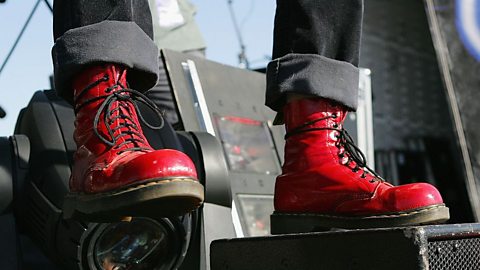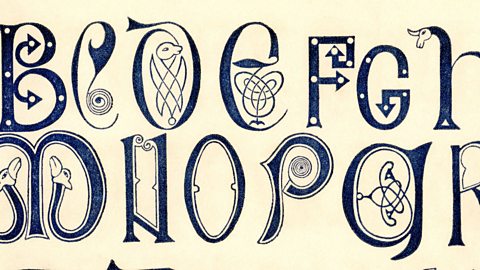What do the Mona Lisa and Dorothy's ruby slippers have in common?
They both are, of course, very famous and instantly recognisable, but they also share a significant event in their history: they were stolen. From movie props to priceless gates, here are five famous things that went missing at some point or another.

Nothing to smirk at: The Mona Lisa
One of the most famous artworks in the world, Leonardo da Vinciãs Mona Lisa (also known as La Gioconda) was stolen from the Louvre in Paris in August 1911.
Police were baffled, as it seemed to go missing with no one noticing. The theft launched the painting into global fame at a point in time when many had never seen it.
It wasnãt until two years later that the culprit would be discovered: Vincenzo Peruggia, an Italian immigrant working in France as a decorator, whose job had given him access to the Louvre.
The story goes that Peruggia had removed the painting from its frame and bold-facedly walked out of the gallery, with Mona Lisa tucked under his smock.
After keeping it in his flat for two years, in 1913 he got in touch with Alfredo Geri, an antique dealer in Florence, to ask if he was interested in the painting. Once verified that was indeed Leonardo's masterpiece, Geri alerted the police and Peruggia was arrested.
The Mona Lisa was returned to the Louvre and has hung there ever since.

Jurassic theft: Dinosaur fossil
Imagine the panic when a dinosaur goes walkabout from its dig site. In 2012, straight out of a sci-fi novel, a Tyrannosaurus-Bataar (cousin of T-Rex) skeleton disappeared from the Gobi desert - an area rich in dinosaur fossils stretching across Mongolia and China. The 70-million-year-old T-Bataar, along with many other dino bits and pieces, was illegally imported to the US and put up for auction for over 1 million dollars.
In Mongolia, fossils are classed as state-owned natural resources and itãs illegal to pick up, keep or own them, so the smuggling of T-Bataar was a Cretaceous no-no. Mongolian palaeontologist Dr Bolortsetseg Minjin intercepted the dino black market by bringing attention to the auction, and the fossils were returned in 2013. They can now be admired at the Central Museum of Mongolian Dinosaurs in Ulaanbaatar.
Someone took it down: The Strawberry Field gates
A childhood playground of Beatlesã singer John Lennon, Liverpoolãs Strawberry Field was launched into fame by the bandãs 1967 song Strawberry Fields Forever. The Salvation Army property operated as a childrenãs home between 1936-2005, and one Friday afternoon in the year 2000, some of the resident children noticed the gates being moved. They ran to tell staff who came out to see the gate had disappeared.

The eight-foot strawberry-coloured gates were cut down and packed into a van to be sold as scrap. Luckily, the unsuspecting dealer who bought the gates realised where theyãd come from and returned them to the police. The iconic red gates were replaced with a replica in 2011, while the original set was stored for safekeeping and brought out for the occasional showcase. They then went on a city tour before returning home to Strawberry Field, which opened to the public in 2019.
You can now see both red gates at the property ã the replica upon entering, and the originals safe and sound in the gardens. Hopefully theyãll stand in Strawberry Field forever!
Caught red-footed: Dorothyãs ruby slippers
In 1975, the childhood home of Judy Garland in Grand Rapids, Minnesota, was turned into a museum of memorabilia for the film The Wizard of Oz. Among the treasures were protagonist Dorothy Galeãs iconic red-sequined pumps, which had been loaned to the museum by a collector. Covered in over 2,000 glitzing sequins, they are thought to be one of the most valuable movie props ever. One late night in 2005, thieves broke through a window and stole the shoes, leaving no fingerprints or footprints.
The FBI launched an investigation into the theft, but no arrests were made. A reward of $1m (roughly ôÈ725k in today's money) was offered by an anonymous donor, but it expired on the tenth anniversary of the theft. It wasnãt until 2018 that the shoes were found, checked for authenticity against another pair at the Smithsonian, Washington D.C., and marched back to Grand Rapids. Thereãs no place like home!
Grand theft empire: The Empire State Building
Okay, so the actual building wasnãt stolen ã but, thanks to a glaring loophole in the notary system, the deed to it was. The New York Daily Times conducted the grand 'heist' in 2008, and it took under 90 minutes to file for ownership of the 2 billion dollar (1.35 billion pounds) property. They drew up false paperwork and an agency rubber-stamped the transfer from Empire State Land Associates to the newspaper's fake company, Nelots Properties LLC (Nelots is ãstolenã backwards).
The Daily left other clues in the paperwork, such as naming the notary after famous bank robber Willie Sutton, and the notary witness after King Kong actress Fay Wray ã referring to the giant ape climbing the Empire State Building in the 1933 film. The building was promptly returned within 24 hours, but it revealed how easy it was for fraudsters to use fake documents for all sorts of purposes.
Five of history's most surprising bans
No popcorn in cinemas? Or football in England and Scotland?

Histories of the mini skirt, the white wedding dress, and why the tale you've probably heard about nylon isn't true.

The deviously difficult dead word quiz
Do you know what words we no longer use? Take our quiz to find out.
